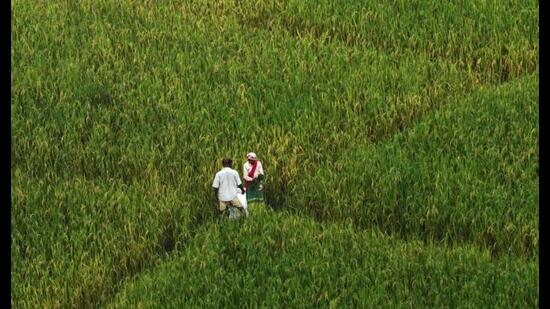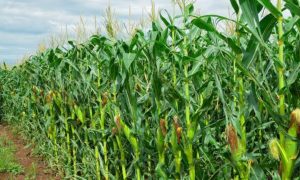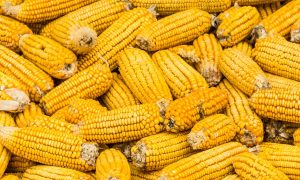Area under maize, direct seeded rice up in Punjab

In Punjab, the area under maize has increased by 30% to 123,000 hectares, and direct seeded rice (DSR) acreage has risen by 44% to 248,000 acres. This shift reflects a move towards crop diversification due to water scarcity and government incentives. The area under basmati has also grown, reaching 650,000 hectares. However, there is concern over a 44% drop in cotton cultivation, prompting the search for new GM seeds to address this issue.
In a positive development, Punjab is witnessing the agrarian sector moving towards crop diversification, though that may be slower than anticipated. The area under maize, direct seeded rice (DSR) and aromatic premium variety of basmati has increased substantially by up to 44% as compared to the previous kharif season. Some patches have also been sown with groundnut in the state, shifting from cultivation of water-guzzling paddy, particularly with the traditional method of transplanting saplings in puddle fields with up to nine inches of water accumulation.
The area under basmati this season is 6.5 lakh hectares which is expected to reach 7 lakh (17.5 lakh acres). Last year, the area was 5.96 lakh hectares. Increase in the area under basmati attributes to good remunerative price which touches up to ₹4,500 per quintal. “Market trends are good in the current season so farmers can expect a good price,” said Punjab Agricultural University vice chancellor Dr SS Gosal.
As per the figures of Commission for Agricultural Costs and Prices (CACP), the Centre’s body that fixes minimum support prices on different crops, a kilogram of coarse-variety rice generally grown in Punjab consumes 3,367 litres of water from seeding to harvest. A total of 30 lakh hectares (75 lakh acres) are sown under paddy every season which also includes aromatic basmati.
The area under maize crossed 1.23 lakh hectares (3.2 lakh acres) this season from last year’s 94,000 hectares (2.3 lakh acres), marking a 30% increase. The Centre has offered a sum of ₹289 crore to be distributed among farmers who shift from paddy to other crops. A sum of ₹7,000 per acre (up to 12.5 acres) will be paid to farmers who have diversified and brought in J-forms regarding having sold crops other than paddy in the current season. Under the scheme, the Punjab government will contribute 40% and the Centre 60%.
Owing to its good remuneration prices and demand from the industry, particularly bio-fuel (ethanol) sector which has 25 production units in the state, the demand for maize is expected to go up.
“We have to conserve the groundwater which is falling at a fast pace. We are taking our best foot forward. Increase in the area under maize is very encouraging. The eligible farmers will be paid an incentive for the diversification,” said special chief secretary (agriculture) KAP Sinha.
The groundwater table in Punjab is falling at a fast pace, at least one metre every year averagely, which has led to 142 blocks out of 165 in the state turning dark (water usage is more than the recharge).
There has been a significant 44% increase in the area under the direct seeded rice (DSR) in the state than last year. The acreage sown using the water-conserving DSR technique has risen to over 2.48 lakh acres, up from 1.72 lakh acres during the kharif season of 2023. Muktsar district, with 78,468 acres under the DSR, topped the state, followed by Fazilka (75,824 acres), Amritsar (17,913 acres), Ferozepur (17,644 acres) and Bathinda (12,760 acres).
The Punjab government offers an incentive of ₹1,500 per acre to farmers taking up the DSR method. ₹20.33 crore was distributed to 17,116 farmers as incentive in the last kharif season and it is expected to touch ₹30 crore this season.
“As many as 24,120 farmers have registered their 2.48 lakh acres of land on the DSR portal till date. Field officials are verifying the farmers and their DSR-registered land. Once the verification is complete, the incentive amount will be directly credited into the farmers’ accounts through direct benefit transfer,” said state agriculture minister Gurmeet Singh Khudian.
Fall in cotton area worries experts
The trend that has worried the state agencies and the experts is the 44% fall in the area under cotton from previous season’s 1.73 lakh hectares to 97,000 hectares in the current season.
“Fall in the cotton area is worrisome. Officials are trying to curb it as cotton is a major cash crop of the state and growers earn good profit,” said agriculture director Jaswant Singh. According to him, the department has sought a new generation of GM seeds for the crop.
Source Link : https://www.hindustantimes.com/cities/chandigarh-news/area-under-maize-direct-seeded-rice-up-in-punjab-101722795362820.html
















